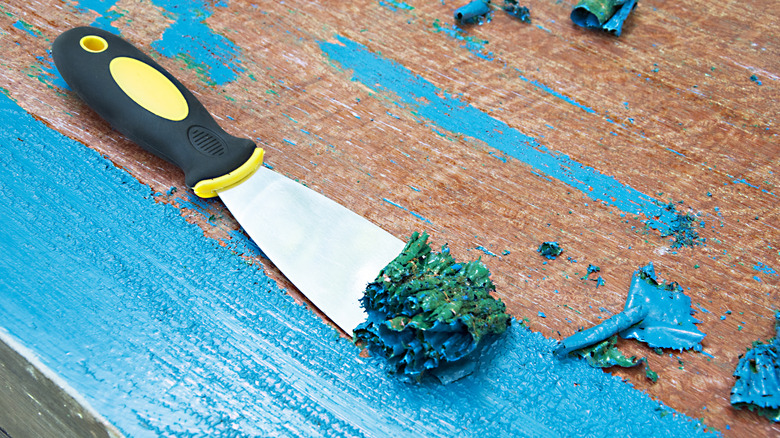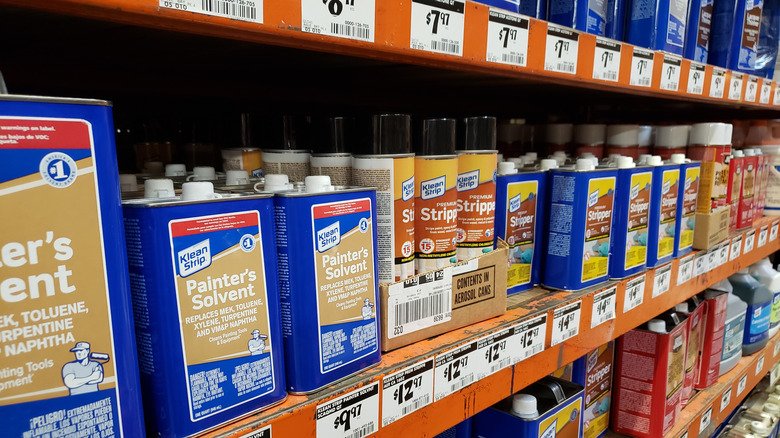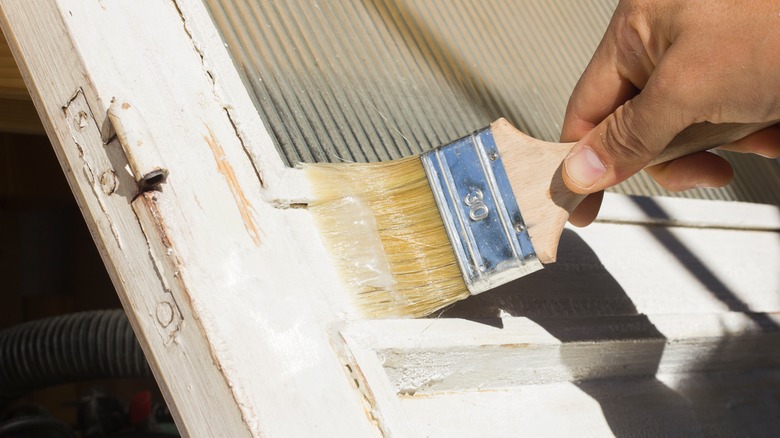The Right Way To Strip Paint From Wood
Paint removal is a great option for those looking to change up the look and feel of their home or furniture. With the right tools, the process can be relatively easy and effective, requiring only the slightest bit of elbow grease. But, it's important to consider the type of surface you'll be working with. No two paint removal jobs are exactly alike, as some are much larger and take more time to complete than others. For instance, one might go about removing paint from floorboards differently than when working with a set of rocking chairs.
There are many ways to remove old paint from wood, including sanding, pressure washing, and melting. All of these methods have their respective downsides because they each remove paint while damaging the wood underneath to a certain extent. For those wanting a quick, yet thorough removal of paint from a wooden surface, using a chemically-based paint stripper might be the best option – here's how paint strippers work, and how to use them safely around your home.
Why paint strippers are ideal
Paint strippers are perhaps one of the more convenient products for home improvement enthusiasts, as they can remove large quantities in a relatively short period of time. It's also useful for targeting hard-to-reach places in select furnishings, like tight corners and elaborately-carved designs.
There are several different formulas of paint strippers available, each differing in strength and level of toxicity. Collectively, caustic paint strippers are much more toxic than their counterparts, as they feature sodium hydroxide as a base chemical. Eco-friendly paint strippers and solvents are less powerful, however, they are safer to use. They are also more likely to require multiple applications, thus making the removal process longer to complete. Moreover, although they're generally weaker, these paint strippers can still cause substantial harm, and even irreversible damage, to live wood. So, ensure that the product you use on your furnishings is safe to be applied on wooden surfaces.
How to use paint stripper
Since paint strippers are usually sold in a liquid or gel form, you can use a paintbrush or roller to apply the product to your wooden surfaces. Always inspect your wood for cracks and signs of wood rot prior to applying paint remover, since there's no use in trying to repaint wood inside or outside of your home that is deemed unfit for continued use.
Chemically, paint stripper doesn't cause the paint on top of the wood to simply dissolve upon contact, but instead causes the paint to lift slightly from the wood's surface, making it easier to wipe off with a rag or cloth. While the majority of the paint should come off in this way, any pesky leftover remnants of paint in hard-to-reach places should be removed with a paint scraper. You may also need to repeat this process several times, especially if the previous paint job was applied in multiple coats.
Because they can be harmful to the skin and eyes, paint strippers of all kinds should be handled and used carefully. Wear protective clothing, gloves, and appropriate headgear to keep all parts of your body safe. These chemicals often produce strong odors as well, so it is recommended to use them outdoors or in a well-ventilated space.


